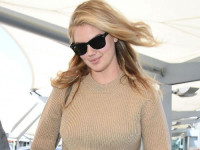UINavigationController与UITabBarController
来源:互联网 发布:js中跳转页面 编辑:程序博客网 时间:2024/05/18 21:41
UINavigationController:
什么?这玩意竟然继承自UIViewController?看上去不要太像唉!
废话少说,让我们看看这玩意是什么组成的吧!----------
不追求细节的前提下:
从官方文档我们可以得到,整个NavigationController分成了三个部分:
1:最上面的UINavigationBar。
导航栏:UINavigationBar继承自UIView
2:中间的NavigationView。
这里倒是和ViewController一样,也是一个View。
使用navigation.view可以访问
UILayoutContainerView,在这个容器中添加的内容会盖在导航上面(toolbar上面),状态栏下面。原点与状态栏原点一致。
3:下边的NavigationToolBar。
UIToolBar同样继承自UIView。
============
初始化:
initWithRootViewController
还记得前面讲过的UIViewController中怎么实现childViewController之间的切换的么?也需要先将某一个子ViewController 的View添加到某个可以显示的容器中,然后才能利用这个View实现子类Controller中View内容的切换。这里的根ViewController也与之类似。根视图控制器会作为默认显示的ViewController,而不同ViewController之间的切换似乎也和前面提到过的只是对View进行变换吻合,因为在切换中,你的导航和ToolBar似乎并没有随着View的移动而移动。
成员数组:
@property(nonatomic,copy)NSArray *viewControllers;// The current view controller stack.
其实,NavigationController以Stack的形式来管理这个数组,并且NavigationControoler的View与这个栈的栈顶元素相关联,也就是说,只要改变了这个数组的内容,NavigationController的View就会改变。甚至可以使用SetViewControlelrs方法一次性设置整个流程,并将流程确定在栈顶ViewController的状态。
关于代理,虽然很少用到:
UINavigationControllerDelegate
UINavigationController也是提供了代理的,用于监听当前NavigationConroller显示的是哪个ViewController。- (void)navigationController:(UINavigationController *)navigationController willShowViewController:(UIViewController *)viewController animated:(BOOL)animated;
- (void)navigationController:(UINavigationController *)navigationController didShowViewController:(UIViewController *)viewController animated:(BOOL)animated;
关于UINavigationItem:
@property(nonatomic,readonly,retain)UINavigationItem *navigationItem;// Created on-demand so that a view controller may customize its navigation appearance.
UITabBarController:
根据UINavigationController 的经验,这个东东应该也是继承自UIviewController的。(从名字就可以看出来好么,大神)
国际惯例:看看它的结构。
貌似比UINavigationController简单一丢丢。
分为两部分:
1:上面的是所谓的Custom content。
亮瞎狗眼的细节你注意到了没?这个content里面竟然包含状态栏,而你去看看上面的UINavigationController,它是不包含状态栏的,事实上,TabBarController所处的层次结构肯定不可能高与状态栏,因为任何UIView都不可能盖在状态栏之上。但是,TabBarcontroller的层次结构还是非常高了,所以,一般都是用TabBarController来管理不同的NavigationController,而使用NavigationController来管理不同的ViewControlelr,再用ViewController来管理UIview,形成这样的一个层级结构。
使用tab.view可以访问
UILayoutContainerView层,如果添加一个uiview到这个层中,那么这个uiview在所有的子ViewController中均可见(并且还能盖在tabBar上面),并且Frame的起点是与状态栏一致的起点。
如果需要恶补更多关于UIview层次的知识,访问:
http://blog.csdn.net/hamasn/article/details/8216584
2:下面的TabBar。
有三个方法与之有关:
@property(nonatomic,assign)UIViewController *selectedViewController;// This may return the "More" navigation controller if it exists.
返回“More”这个NavigationConntroller。
@property(nonatomic)NSUInteger selectedIndex;
当前选择的是ViewController的下标。
@property(nonatomic,readonly)UINavigationController *moreNavigationController;// Returns the "More" navigation controller, creating it if it does not already exist.
返回“More”这个NavigationConntroller,如果不存在就会创建并返回一个。
关于代理:
UITabBarControllerDelegate
方法均是在视图切换时刻触发的事件监听,不赘述。---------------------------------------------------------------------------------------
ViewController在其他UI视图中的拓展:
由于IOS的特有语法,一个类是可以分成很多部分定义在不同的类中的。我们上面提到的两个Controller中就存在对UIviewController的拓展定义:
其中:UINavigationController中对ViewController的拓展是
@interface UIViewController (UINavigationControllerItem)
@property(nonatomic,readonly,retain)UINavigationItem *navigationItem;// Created on-demand so that a view controller may customize its navigation appearance.
正是因为这样,我们在ViewController中才能通过self.navigationItem修改所属的UINavigationController的属性
@property(nonatomic)BOOL hidesBottomBarWhenPushed;// If YES, then when this view controller is pushed into a controller hierarchy with a bottom bar (like a tab bar), the bottom bar will slide out. Default is NO.
当这个ViewController被显示的时刻,将下面的TabBar隐藏,至于为什么要将与TabBarController有关的拓展写在这里面,我只想说,你他么有病么!
@property(nonatomic,readonly,retain)UINavigationController *navigationController;// If this view controller has been pushed onto a navigation controller, return it.
返回所属的UINavigationController对象。
@end
@interface UIViewController (UINavigationControllerContextualToolbarItems)
@property (nonatomic,retain) NSArray *toolbarItemsNS_AVAILABLE_IOS(3_0);
- (void)setToolbarItems:(NSArray *)toolbarItems animated:(BOOL)animatedNS_AVAILABLE_IOS(3_0);
通过这个方法自定义ToolBar
@end
UITabBarController中也有拓展:
@interface UIViewController (UITabBarControllerItem)
@property(nonatomic,retain)UITabBarItem *tabBarItem;// Automatically created lazily with the view controller's title if it's not set explicitly.
同理,通过这个对象,对所属的UITabBarController进行管理。例如,修改这个viewController在父tabBarController中显示的文字和图片。可以通过自定一个UITabBarItem对象然后赋值给它,来自定义显示自身在tabBarController中的显示。
@property(nonatomic,readonly,retain)UITabBarController *tabBarController;// If the view controller has a tab bar controller as its ancestor, return it. Returns nil otherwise.
为什么在ViewController中使用self.tabBarController得不到所属的tabBarController对象,因为这里说是只有当前ViewController继承自TabBarController,才能返回一个UITabBarController对象。setFinishedSelectedImage:withFinishedUnselectedImage:这个方法可以设置选中和非选中状态下的图片。构造方法中就可以设置文字。
@end
=====高级篇======
UINavigationController样式自定义:
1:UINavigationBar样式定制:
关于UINavigationBar其上面的所有内容都是通过navigationItem来管理的。(也就是在ViewController中通过self.navigationItem来管理)
但是如果要设置UInavigationBar本身的属性,就只能通过self.navigationController.navigationBar来设置,如导航栏的背景图片,背景颜色和设置为半透明等。
除了第一个ViewController以外,在其它被push的ViewController的NavigationBar左侧都会存在一个返回按钮。这个按钮可以通过
self.navigationItem.hidesBackButton=YES;隐藏。
UIbarButtonItem的定制:
提供了自定义的方法:
[UIBarButtonItem alloc]initWithCustomView:(UIView *)
而导航栏中间titleView也是可以定制的,只需要自定义一个UIView再赋值给它就行。
注意:下面的都是涉及到导航栏本身的属性操作,所以都是通过self.navigationController来管理
[self.navigationControllersetNavigationBarHidden:YES];
隐藏导航栏
[self.navigationController.navigationBarsetBarStyle:UIBarStyleBlackTranslucent];
设置导航栏半透明。与导航一致,对于ToolBar本身,也是通过self.navigationController来管理。
而其上面的内容,则通过self.toolbarItems来进行自定义。
不赘述。
UITabBarController自定义:
只需要定制UITabBar:
而分栏控制器特有一种button类型UITabBarItem,UIBarButtonItem是导航控制器的特有类型。
UITabBarItem定制:
UITabBarItem不能够像上面的导航控制器的UIBarButtonItem一样使用自定义的UIView来定义它。只能够使用系统的类型或者
使用字符串加图片(图片有特殊要求)来初始化它。
角标显示:
在viewController中使用self.tabBarItem.badgeValue=@"99";
- UINavigationController与UITabBarController
- UINavigationController与UITabBarController
- UINavigationController与UITabBarController
- UINavigationController与UITabBarController
- UITabBarController与UINavigationController配合使用
- UINavigationController与UITabBarController混合使用
- UITabBarController与UINavigationController配合使用
- UITabBarController与UINavigationController配合使用
- UITabBarController与UINavigationController配合使用
- UINavigationController与UITabbarController的样式
- UINavigationController,UITabBarController
- UINavigationController, UITabBarController
- UINavigationController+UITabBarController
- UINavigationController、UITabBarController
- iOS之UINavigationController与UITabBarController的使用
- UINavigationController,UIViewController与UITabBarController的整合使用
- iOS UINavigationController与UITabBarController的组合使用
- UIViewController、UINavigationController与UITabBarController的整合使用
- JavaScript 面向对象程序设计(下)——继承与多态
- 批处理命令大全
- 8款流行的移动应用程序开发必备工具
- vc单文档中使某个菜单不可选
- Oracle 11g完全卸载方案(注册表清理)
- UINavigationController与UITabBarController
- 文字适配不同分辨率屏幕
- java 正则表达式
- Android.mk文件语法规范及使用模板
- Ubuntu下ZooKeeper安装过程
- IOS崩溃 异常处理(NSSetUncaughtExceptionHandler)
- C# WinForm程序中使用热键(HotKey)
- scrollLeft、offsetLeft、clientLeft、clientHeight详解
- KVC/KVO原理详解及编程指南




